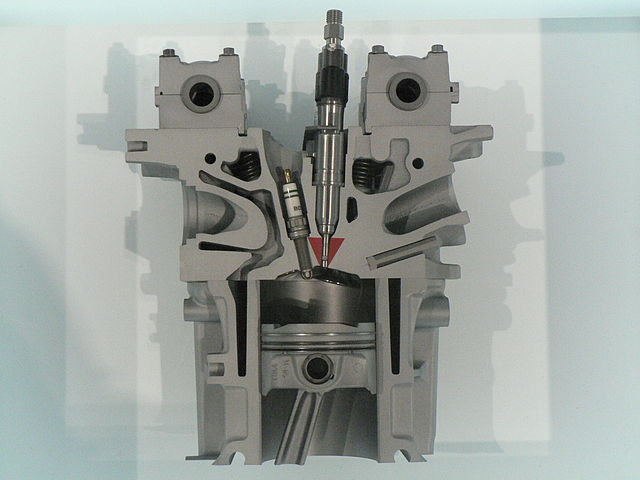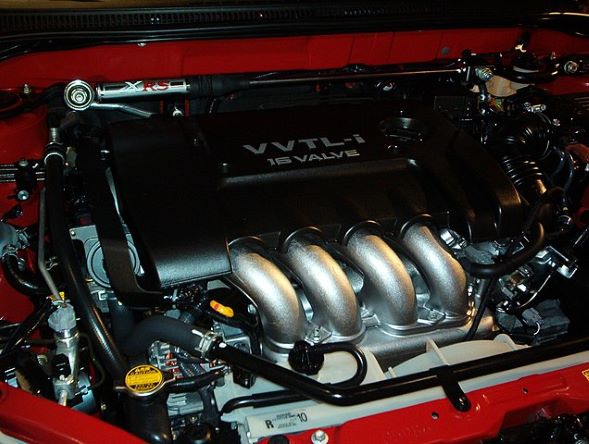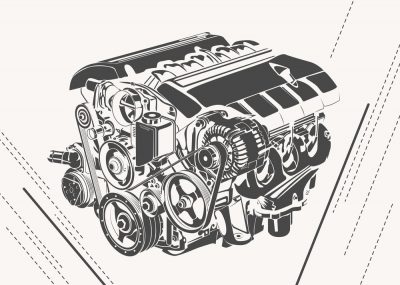We will discuss the origin history of Chevy LS and LT in this article.
Along with the history, we will also discuss the differences and similarities between them.
As we know, both of the engine variants are performance-oriented.
All the critics agreed about their reliability and build quality.
This is the most informative article on the net that will clarify all your doubts with a very simple explanation.
What is Trim Level?
Most people think LS stands for Luxury Sport, LT means Luxury Touring, and LTZ stands for Luxury Touring Z.
It’s a common misconception of most people on the net.
GM hasn’t officially disclosed the elaboration of these short forms on their website or anywhere else.
Trim levels are the different versions of the same model of a specific vehicle.
So, a vehicle trim means another version of the same model.
Vehicle manufacturers like General Motors produce cars, trucks, and SUVs and include some basic features.
When a specific model of a particular vehicle gets popular, the manufacturer adds extra features like a more attractive interior, upholstery, better transmission, modified engine, modified driving system, better comfort level, etc., on the same model giving them different trim names or levels.
For example, Chevy LS, LT, or LTZ are the same model of Chevy with different trim levels or names.
Chevy LS Vs LT [History, Differences, and Similarities]

Both of them are reliable and performance-oriented.
But Chevy LT is far better than LS.
Let’s find out why LT is far better than LS-
Dynamic Fuel Management (DFM)
As we mentioned before, AFM was introduced in 2005 in LS engines.
Many users reported that it caused many issues with the engine.
AFM shuts off half of the cylinder to save fuel consumption.
In 2019, GM developed the AFM and introduced the Dynamic Fuel Management or DFM system in Silverado, a smarter version of AFM.
DFM is being used in Chevy LT and LTZ engines to save fuel within the engine’s efficiency.
DFM functions far better than AFM.
Direct Injection

LT has a Direct Injection system which LS lacks.
Direct Injection sprays fuel directly into the cylinder.
It controls the fuel injection spray pattern.
It ensures the complete burn of the fuel of the cylinders.
It helps to create more Horsepower and saves fuel.
PSI
One of the most amazing things about Direct Injection is the pressure that the system uses.
The old carbureted engine uses 5 to 10 PSI as a balloon has.
Chevy LS engine versions use 30 to 70 PSI which is equivalent to a bicycle’s tire pressure.
But the Chevy LT engine version uses 2900 PSI which is far greater than the LS engines. 2900 PSI is like a high-powered pressure washer.
Cylinder Head Casting
LT has all-new cylinder head casting, a completely different casting from LS.
The intake valves are reversed in the LT engines.
Variable Valve Timing (VVT)

LT has Variable Valve Timing (VVT-2.0). LS also has VVT, but there is a big difference.
LT has continuous VVT, but the LS engine’s VVT was not continuous.
They turn on or off sometimes.
Continuous Valve Timing allows the LT version to produce more torque which LS lacks.
VVT gives better engine performance and better mileage with lower emissions.
Gas Mileage and Performance
Chevy LT has Dynic Fuel Management or DFM, an upgraded version of AFM.
So, the LT engine provides better fuel economy and less emission than the LS versions Engine’s Weight
There are 2 versions of engines, Aluminum, and Iron.
All of the Chevy LT engines are made of Aluminum.
LS engines are made of both Iron and Aluminum versions.
So, LT is always a better choice cause the Aluminum engine provides better braking, control, and performance than the LS versions.
Engine Weight
As we mentioned before, LT has only Aluminum versions.
On the other hand, LS has both Iron and Aluminum versions.
We all know, Aluminum is much lighter than Iron.
So, LT engines are about 50 pounds lighter than the Iron versions.
Gen: I to Gen: V
GM first manufactured the Carburetor engine in 1955. It was Gen: I engines.
Gen: III and Gen: IV engines are those engines that were manufactured by General Motors from 1997 to 2013.
From 2014 till now, GM is manufacturing Gen: V Chevy LT engine versions.
GM has upgraded the engines from Generation to Generation.
So, Gen: V Chevy has better features and amenities than LS versions.
Horsepower and Torque
Gen: I, Chevy engine could produce 110-370 Horsepower. Gen: II, Chevy LS1 could produce 200-330 Horsepower.
Gen: III & IV, Chevy LS can produce 255 to 505 Horsepower.
And Gen: V, Chevy LT can produce 355-495 Horsepower.
The Chevy LT version is the clear winner in terms of Horsepower.
LT trim engines are capable of producing much more torque than LS trim mentioned previously.
You will find the basic differences between Chevy LS vs LT in this video-
Driving Option
Chevy LS and LT have two driving options, 2WD & 4WD.
You can choose whatever you want.
But LT 4WD has more Horsepower of Torque than the LS 4WD.
Pricing
First Gen: II, LS was introduced by General Motors in 1997, whereas LT is another trim or update version of LS introduced in 2014.
So, Chevy LS is considered the base model.
LT is the upgraded version of the same model with some extra features.
So, naturally, LS is cheaper than LT since it has fewer features than LT.
Chevy LS is the base model; it’s less expensive than the LT version.
LT has many modern technology features that LS lacks.
So, LS is the cheapest, and LT is the most expensive in terms of money.
History of Chevy LS And LT Engine
Let’s discuss the history of Chevrolet LS and Chevrolet LT.
History of Chevy LS Engine
The small-block Chevy engine originally started as a Generation: I engine in 1955 that was the first V-8 engine.
Gen: II, also known as LT1, came out in 1992 but short many parts with Gen: I.
Gen: III and Gen: IV engines are those which were manufactured from 1997 to 2013.
In 1997, the LS engine debuted. It was a Gen: IV engine.
It’s a good engine. 5.7L LS one engine came out in 1997, putting out 345 Horsepower in the Corvette.
In 1998, Chevrolet used the LS engine in Camaro and Firebird with a slight detune that makes 305 Horsepower.
All of them performed pretty well back those days.
That is why it was pretty easy to find LS engines.
In 1999, Chevrolet dropped V8 LS engines in some of their truck and SUV models and offered it in three engine displacements 4.8 liters, 5.3 liters & 6.0 liters.
6.0 liter is typically found in ¾ and 1-ton trucks.
All three of the engines were using the cathedral port then.
Truck engines are Iron made, and car engines are Aluminum made.
Aluminum engines are about 100 pounds lighter than the Iron made Chevy truck engines.
In 2001, Chevrolet used Gen: IV LS engines in Corvette-ZO6, producing 385 Horsepower.
It had a new intake manifold, better cylinder heads, redesigned combustion chamber, higher compression ratio, thin-walled cast iron exhaust manifold, and hotter camshaft.
LS engine began to use Active Fuel Management System (AFM) in 2005 to improve the gas mileage.
In 2006, Chevrolet introduced a 7.0 liter LS engine to produce 505 Horsepower.
They also introduced 6-speed 6L80E transmission in 2006.
In 2007, Chevrolet began to use Aluminum LS engines in their trucks which they used only in cars before.
Aluminum engines are about 100 pounds lighter than Iron engines.
It provides better acceleration, better braking, and better handling.
6.2 liter LS engines were first used in 2007 in Chevy Escalade and Denali.
It’s an Aluminum block engine with high compression, high displacement, and around 400 Horsepower.
In 2008, we saw the debut of the LS3 on the Corvette.
It can produce 430 Horsepower. It’s considered the best LS engine.
GM dropped its manual transmission option from trucks in 2008.
In 2009, we saw two debuts, the supercharged LS9 on the zr1 and the LSA in the Cadillac CTS-V.
Corvette has 638 Horsepower, and the Cadillac CTS-V has 556 Horsepower with titanium rods & intake valves.
In 2010, the Camaro was back with 426 HP on the manual trans version and 400 HP on the automatic transversion.
It was an L99 version engine. L9h and the lh9 are different versions of the Chevy engine.
Most people get confused about them.
L9h is a 6.2 liter with 100 more horsepower than the lh9 version.
In 2011, there were no mentionable changes; the CTS-V coupe and wagon were added to the list of LS engines.
In 2012, there were not a lot of changes.
In 2013, a new Corvette model, the 427 was convertible.
It was pretty much like the zo6 model. It was added to the Chevy LS engine list.
In 2014, Generation: V, a new type of engine known as LT was introduced on the c7 Corvette.
All the LT, Gen: V engines are Aluminum blocked.
On the car side, the Corvette debuts with 7-speed manual transmission.
On the truck side, there are two options, 5.3l and 6.2l.
The 4.8 liter is no longer available. 5.3 is also considered a reliable LS engine. z28 Camaro in introduced with the LS7 from the Corvette.
In 2015, there was no change on the car side, and it was the last year of z28.
The last of the LS engines are still carried on heavy-duty pickup trucks and vans on the truck side.
But SUVs like Tahoe got Gen: V LS engines this year.
In 2016, LS3, L99, and LS7 (Gen: V) were all out of production.
There were no LS engines left on the car side.
There were a few LS engines left on the truck side, mostly in Vans.
2017 was the last year of Chevy LS engines.
After the production of 21 years, GM decided not to manufacture more LS engines till now.
History of Chevy LT Engine
Chevy LT1, Gen: II was produced from 1992 to 1996.
LT1 could produce 200 to 330 Horsepower.
After 1996 GM stopped producing the Chevy LT1.
After 18 years, GM began to manufacture LT in 2014 again.
I don’t think Chevy LT is a minor upgrade of LS. Instead, it’s entirely a different engine with more Horsepower and Fuel efficiency.
About 98% of the engine material is entirely new; only 5 parts from LS are carried out.
The LT has the most amazing Horsepower and Torque curve.
It can easily produce 355 to 495 Horsepower at low RPM than LT engines.
From 2014, till now all LT engines are Gen: V engines but they come with Aluminum Blocks.
Both in trucks and cars, the Aluminum version of the LT engine is being used till now.
In 2014, Chevy LT was introduced on c7 Corvette.
Corvette debuts with 7-speed transmission.
On the truck, there were 5.3l and 6.2l versions.
From 2014 till now, GM is producing LT and LTZ trims of the engine.
FAQs
Chevy LS or LT, Which One is a Better Option for You?
We think you already know which is the better option.
In terms of technology, premium features, performance, and amenities LT engine is far better.
If you want to differentiate between Chevy LS vs LT.
Clearly, LT will be a better choice than LS.
What Does LS Stand for on a Chevy?
Most people think LS stands for Luxury Sport.
According to them, LS means Luxury Sport; actually, it’s a misconception.
It means nothing like a name. Many people have names that mean nothing.
So, LS means LS. It doesn’t have a meaning like a person’s name.
Now you know what LS stands for on a car.
General Motors debuted the LS series V8 small block engine in 1997.
It was a new design to previous small block V8 engines.
LS engines were used in Rear Wheel Drive (RWD) Chevy cars and trucks.
Some Popular Chevy Models with LS Trims Are-
- Chevy Camaro
- Chevy Equinox
- Chevy Malibu
- Chevy Spark
- Chevy Suburban
- Chevy Trailblazer
- Chevy Trax
- Chevy Tahoe
- Chevy Traverse
Chevy LS Features
In Comparing with Chevy LT & LTZ, LS is older.
Though Chevy produced the LS engines in 1997, It has been modified several times.
All Chevy LS trims are durable and performance-oriented.
That’s why it gained popularity all over the US.
Chevy LS trims are reigning in the US market today due to their reliability & durability.
Chevy LS uses a 5.3L V8 engine and has an automatic transmission system.
It also includes-
- Airbag
- Keyless Entry with Remote
- Antilock Brakes
- Cruise Control
- Power Windows
- Power Locks
- Cloth Seats
- Power Driver Seat
- CD Player
- 9 Passenger Seats
What Does LT Stand for?
LT stands for Luxury Touring.
So, LT means Luxury Touring.
It’s also a common misconception of people about the elaboration of LT.
GM never disclosed the elaboration of LS, LT, or LTZ.
It doesn’t have a meaning.
It’s just a name. Now you know what LS means on a chevy.
LT series is the developed and updated version of Chevy LS trim.
That’s why LT has more features and amenities than LS.
But the gap between these two trims is not very huge.
Some Popular Chevy Models with LT Trims are-
- Chevy Blazer
- Chevy Bolt EV & EUV
- Chevy Camaro
- Chevy Colorado
- Chevy Equinox
- Chevy Malibu
- Chevy Silverado
- Chevy Suburban
- Chevy Spark
- Chevy Tahoe
- Chevy Traverse
- Chevy Trailblazer
- Chevy Trax
Popular Chevy LT Features-
The Chevy LS follows Chevy LT.
LS was upgraded to LT in 2014. So, Chevy LT has some extra features including-
- Remote Start
- OnStar & Bluetooth
- Z71 Off-Road Package
- Adjustable Pedals
- 8 Passenger Capacity
- Power Passenger Seat
- Leather Interior
- Locking Rear Differential
- Rear Parking Assist System
- Automatic Climate Control
- Fog Lamp
- Premium Audio
- Rear Audio Controlling System
Final Words
We think now you know the Main differences between Chevrolet LS vs LT engines.
If you are willing to buy one, go for the LT.
If you have a tight budget, then go for LS. Both of them are reliable engines.
You can also buy a second-hand LT if you don’t want to miss the upgraded features.
